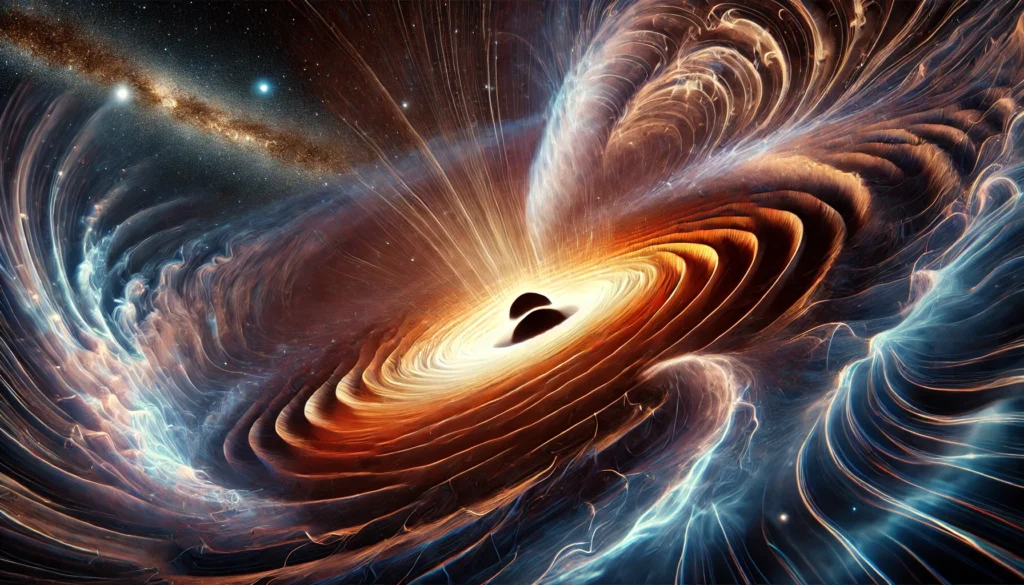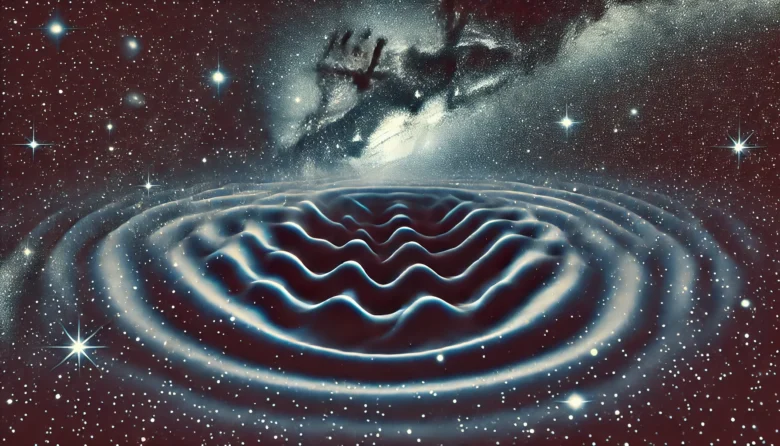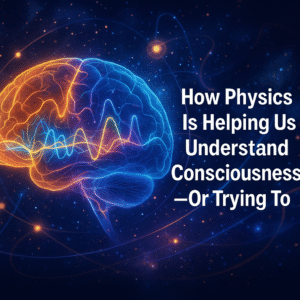Imagine the fabric of space itself rippling like the surface of a pond. This might sound like science fiction, but it’s a natural phenomenon known as gravitational waves. These waves, which travel through the very fabric of space-time, are caused by some of the universe’s most violent and energetic processes. In this blog, we’ll delve into the workings of gravitational waves, shedding light on how they work, why they matter, and what they reveal about the cosmos.
What Are Gravitational Waves?
Gravitational waves are ripples in the fabric of space-time caused by accelerated masses, such as when black holes or neutron stars collide. Simply put, these waves are like ripples in space that spread out from their source, carrying energy across the universe.
Albert Einstein first predicted gravitational waves in 1915 as part of his general theory of relativity. Einstein proposed that massive objects cause space-time to curve, and when these objects move, they create waves that propagate at the speed of light. However, it wasn’t until 2015, a century later, that scientists were able to directly detect these elusive waves, confirming Einstein’s prediction.
How Do Gravitational Waves Work?
To understand how gravitational waves work, it’s helpful to think of space-time as a flexible fabric, like a stretched rubber sheet. When you place a heavy object on this sheet, it creates a dent or curvature. If you move the object rapidly, the dent moves, creating ripples on the surface. These ripples are analogous to gravitational waves.
Gravitational waves originate from catastrophic events, like the merging of two black holes or the explosion of a large star (supernova). When these events occur, they send out waves stretching and squeezing space-time as they pass through. These waves are incredibly faint when they reach Earth, requiring highly sensitive instruments to detect them.

The Detection of Gravitational Waves: A Milestone in Science
Detecting gravitational waves was a monumental challenge due to their incredibly weak signals. The first direct observation was made on September 14, 2015, by the Laser Interferometer Gravitational-Wave Observatory (LIGO). LIGO consists of two observatories in the United States—one in Hanford, Washington, and the other in Livingston, Louisiana—designed to detect these minuscule ripples in space-time.
LIGO detects these waves by using laser beams to measure minute changes in the distance between two mirrors positioned kilometres apart. When a gravitational wave passes through, it causes a slight shift in the distance between the mirrors, which the laser can detect. The discovery of gravitational waves earned the LIGO team the Nobel Prize in Physics in 2017, as it opened a new window to observe the universe.
The Significance of Gravitational Waves
So why are gravitational waves so important? For one, they offer a completely new way to observe the universe. Traditional astronomy relies on light, visible light, X-rays, or radio waves to study celestial objects. On the other hand, Gravitational waves allow us to detect objects and events that might not emit light at all, such as black hole mergers.
Gravitational waves also carry information about their origins that cannot be obtained through electromagnetic observations alone. For instance, by studying the waves from colliding black holes, scientists can learn about their properties, including their masses and spins. This information helps us understand stars’ life cycles, gravity’s nature, and matter’s behaviour under extreme conditions.
Case Study: The First Detection of Gravitational Waves
The first gravitational wave detection, labelled GW150914, came from the merging of two black holes roughly 1.3 billion light-years away. This event unleashed a vast amount of energy, equivalent to three times the mass of the Sun, all in the form of gravitational waves. The signal detected by LIGO lasted only a fraction of a second. Still, it confirmed the existence of gravitational waves and marked the beginning of a new era in astronomy.
This discovery was a triumph for general relativity and demonstrated the power of gravitational wave astronomy. It showed that we could now observe cosmic events that were previously invisible, opening up possibilities for new discoveries about the universe.
The Future of Gravitational Wave Astronomy
The detection of gravitational waves is just the beginning. With technological progress, we can look forward to even more thrilling discoveries. The European Space Agency’s (ESA) upcoming LISA (Laser Interferometer Space Antenna) mission aims to detect gravitational waves from space with even greater sensitivity than ground-based observatories like LIGO. LISA will feature three spacecraft positioned in a triangular configuration, millions of kilometres apart, allowing it to detect lower-frequency gravitational waves beyond LIGO’s reach.
Gravitational wave astronomy also has the potential to answer some of the most profound questions in science. For example, it could help us understand the nature of dark matter and energy, which comprise most of the universe’s mass-energy content. Additionally, it could provide insights into the early universe, potentially revealing information about the Big Bang itself.
Conclusion
Gravitational waves have revolutionized our understanding of the universe, providing a new way to observe cosmic events and expanding the boundaries of astronomy. These ripples in space-time, once purely theoretical, are now a powerful tool for exploring the cosmos. As we continue to study gravitational waves, we will likely uncover more secrets about the nature of reality and our place in the universe.
So, the next time you look up at the stars, remember that hidden within the fabric of space-time are ripples that carry the stories of some of the universe’s most dramatic events.
Author’s Note:
Writing about gravitational waves reminds me of our incredible progress in understanding the universe. From Einstein’s theories to LIGO’s groundbreaking discoveries, seeing how our knowledge has evolved is fascinating. I hope this blog has made the complex topic of gravitational waves a bit more accessible and has sparked your curiosity to learn more.
G.C., Ecosociosphere contributor.




